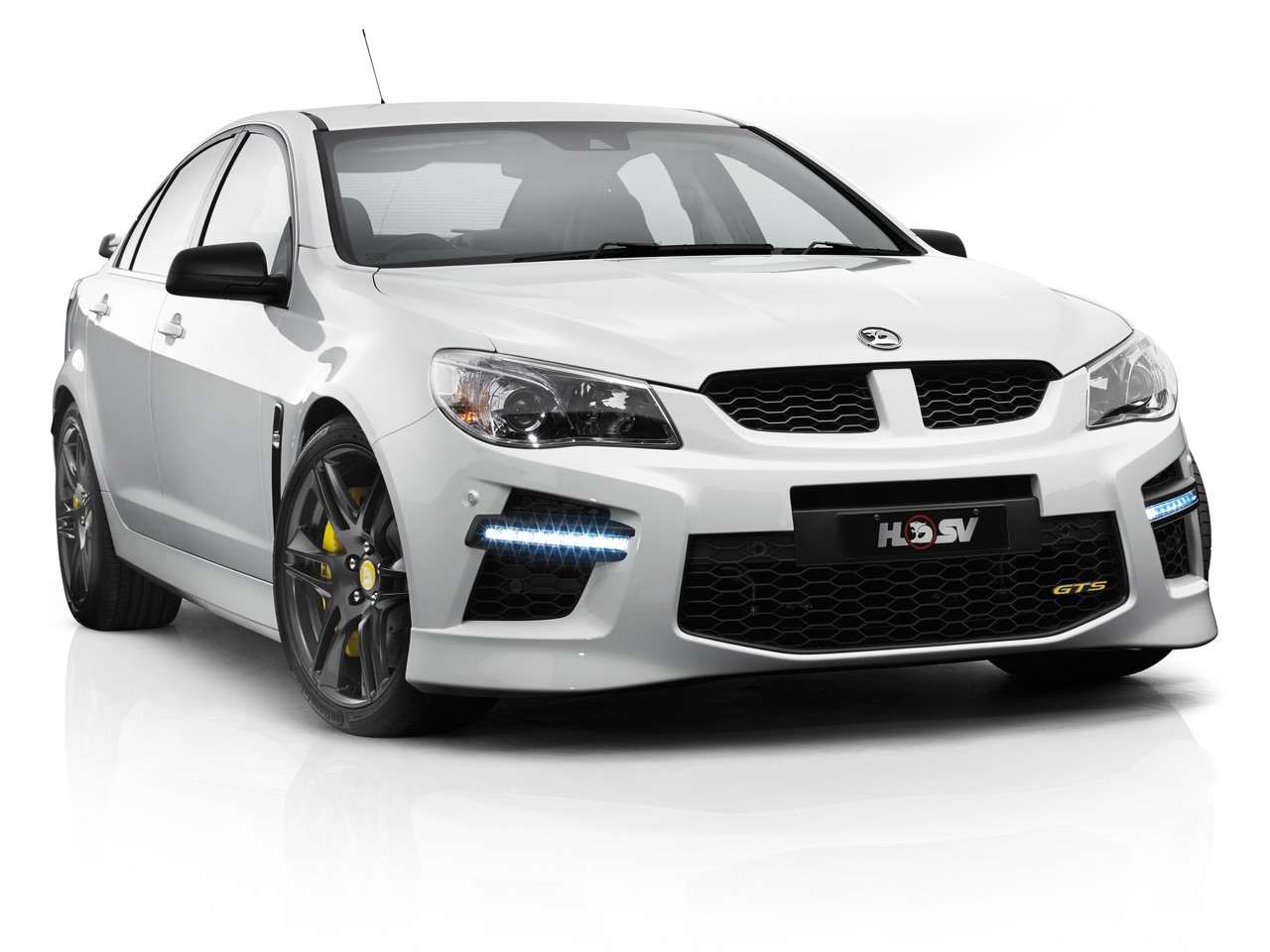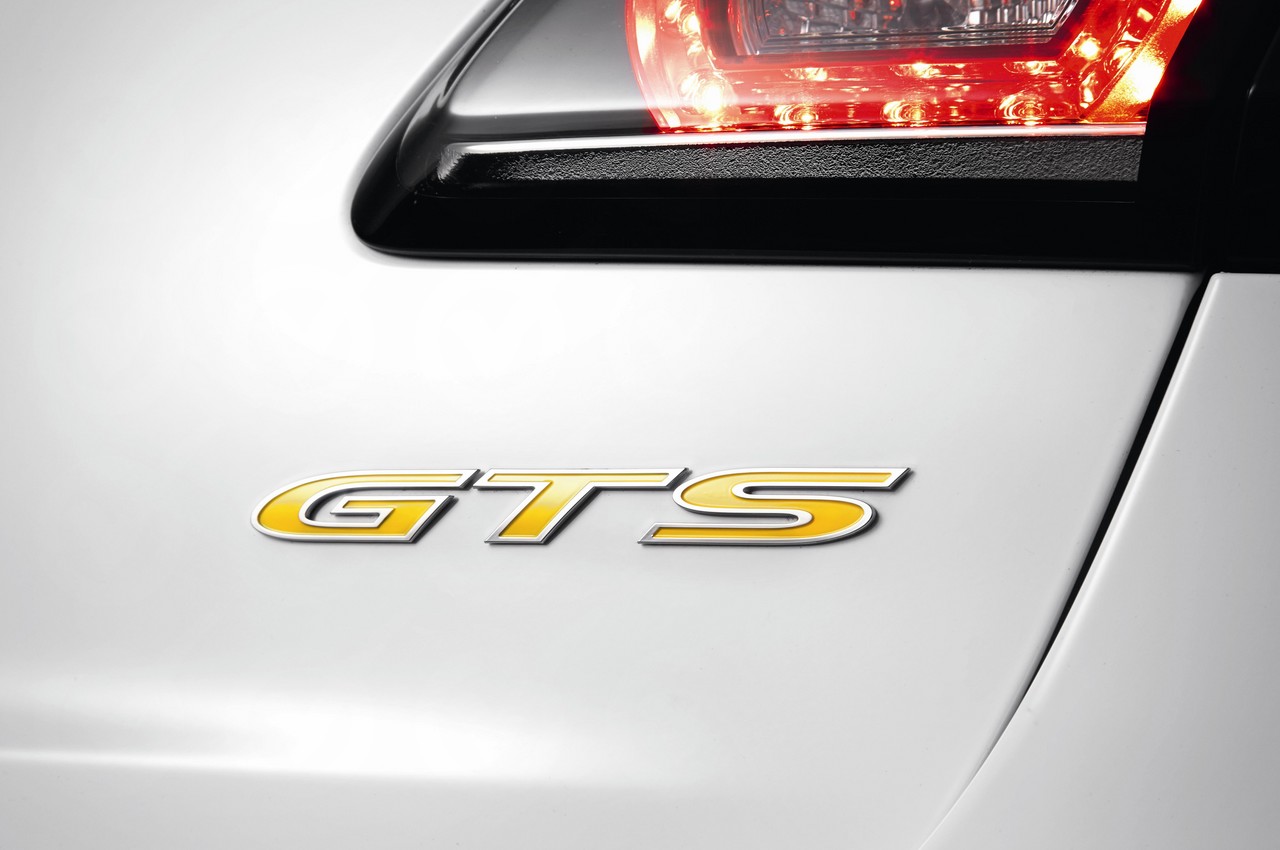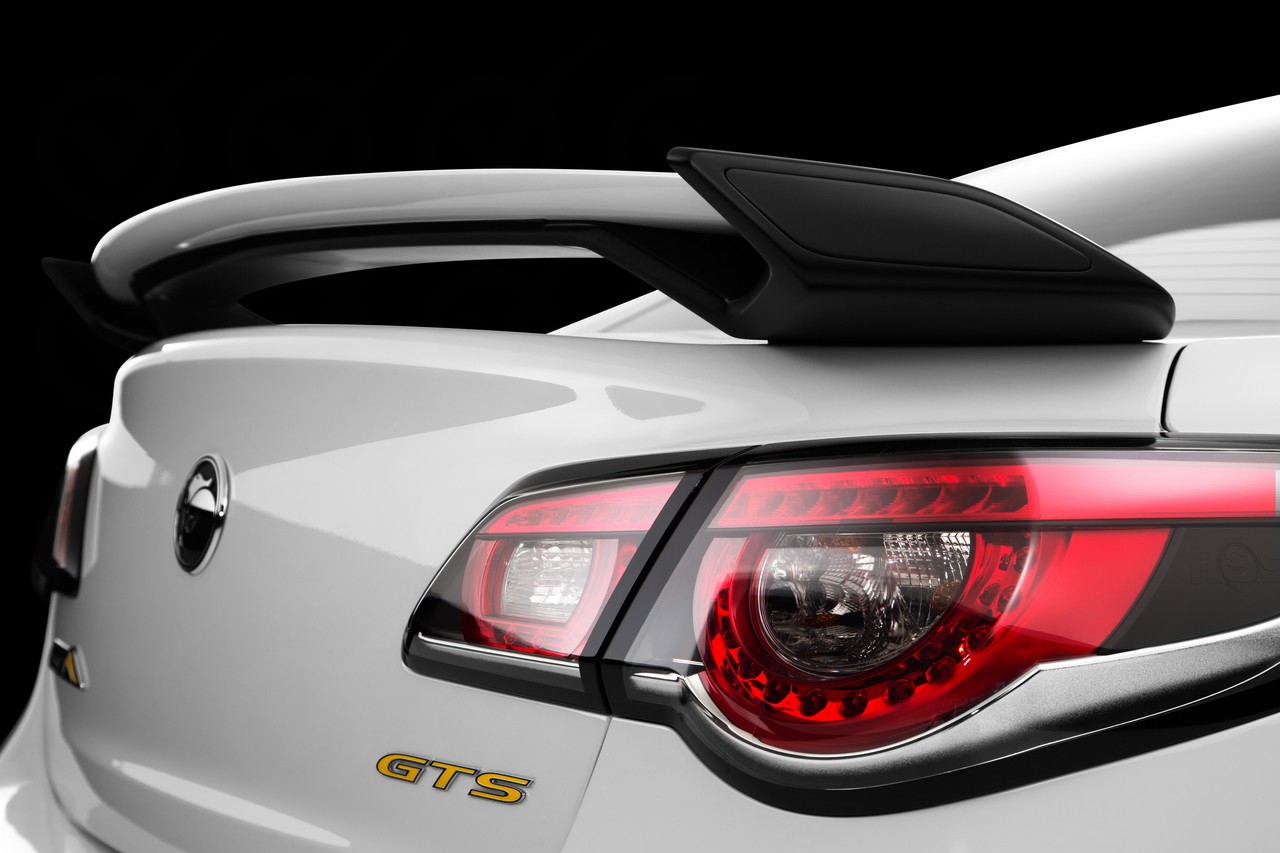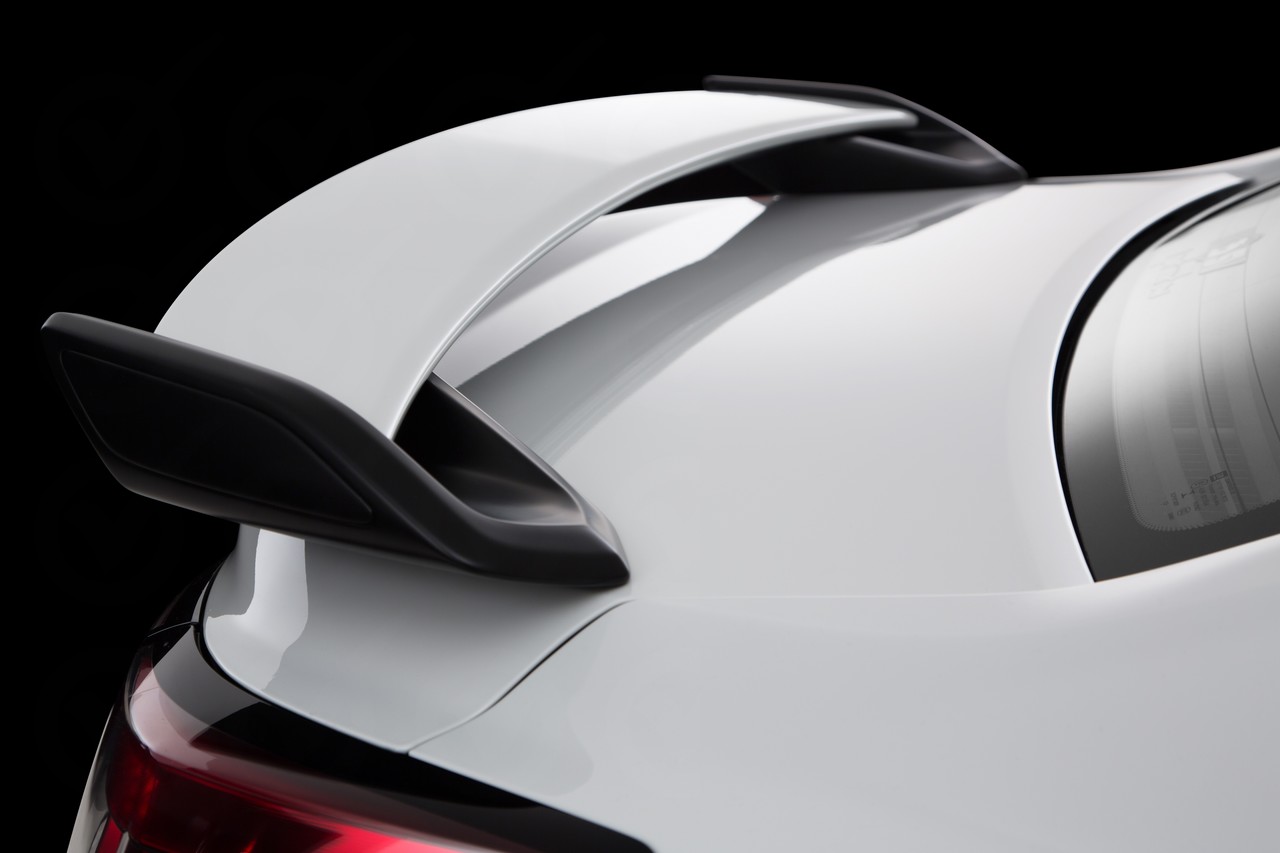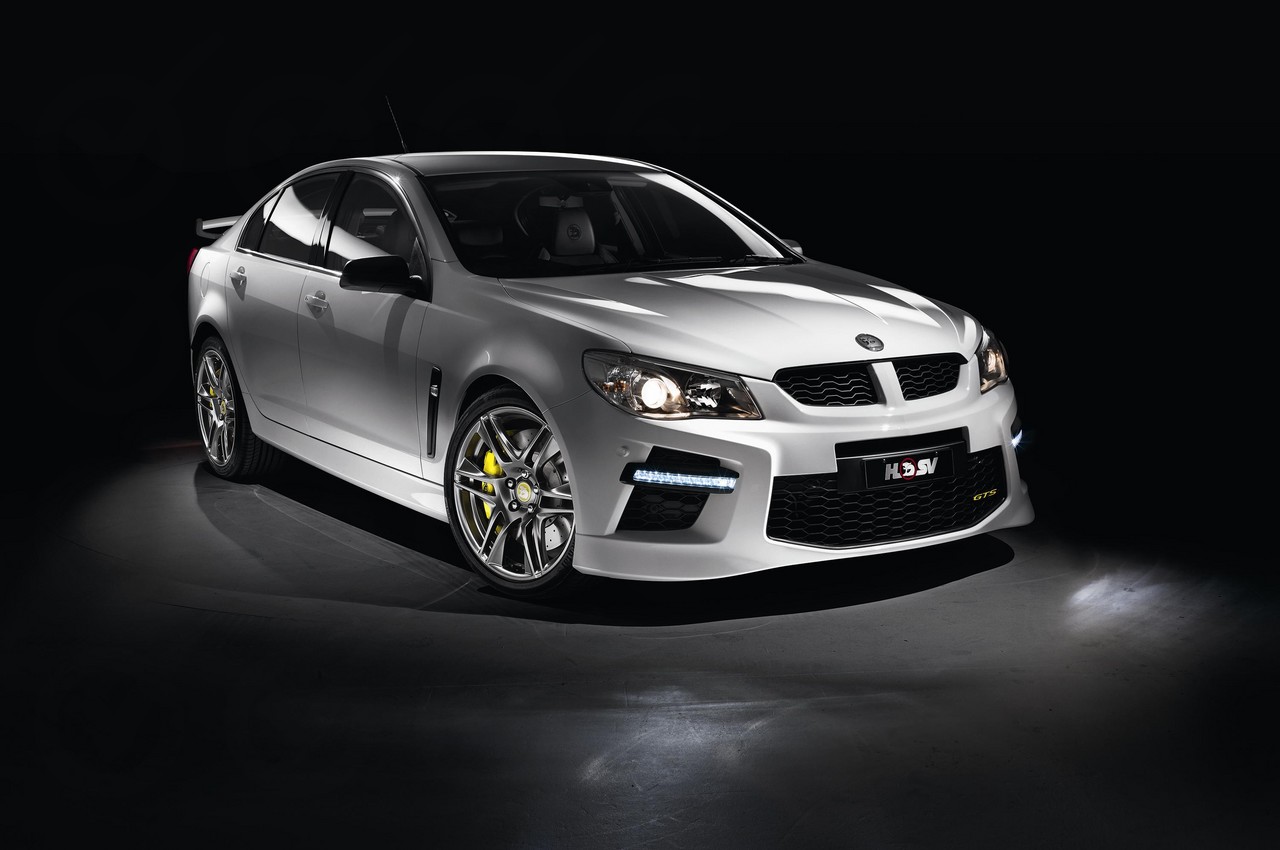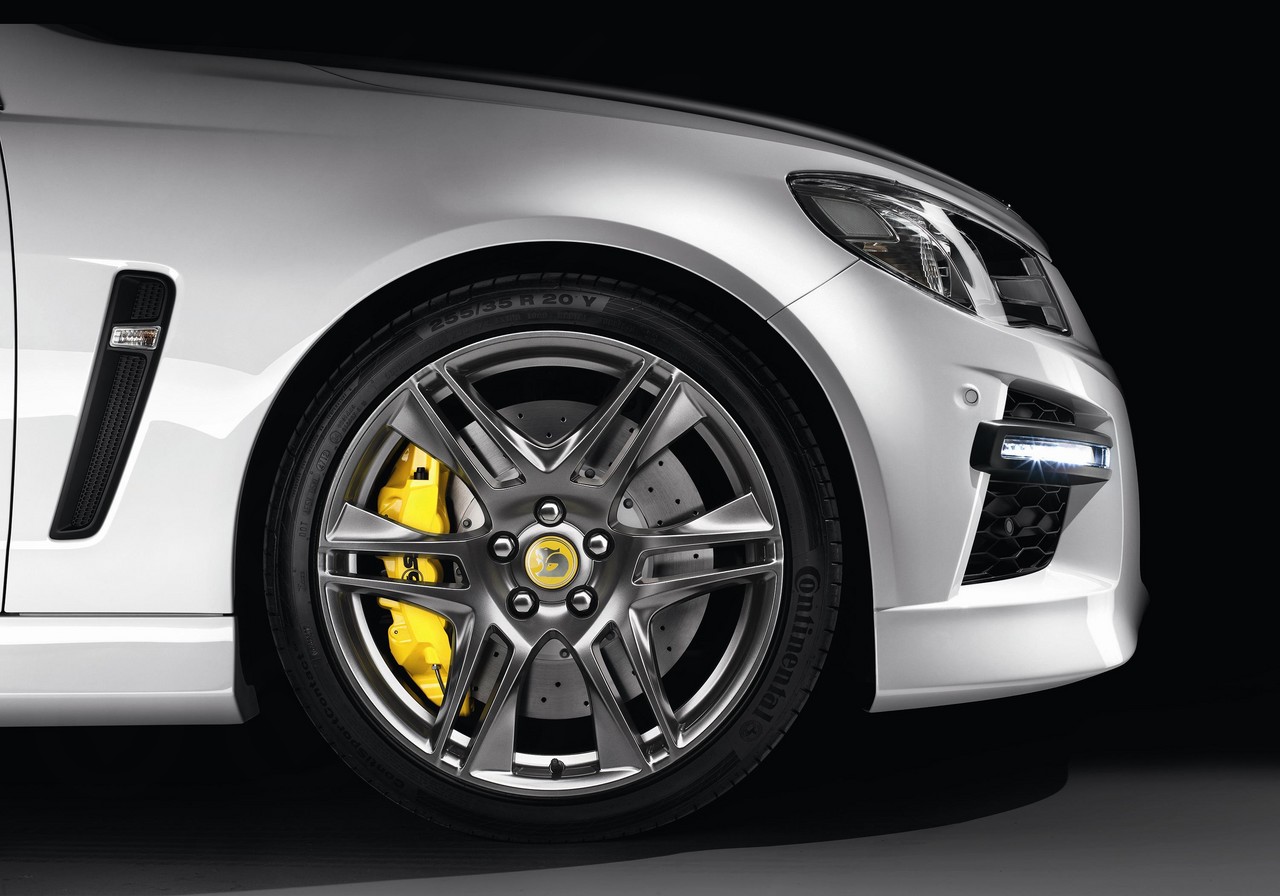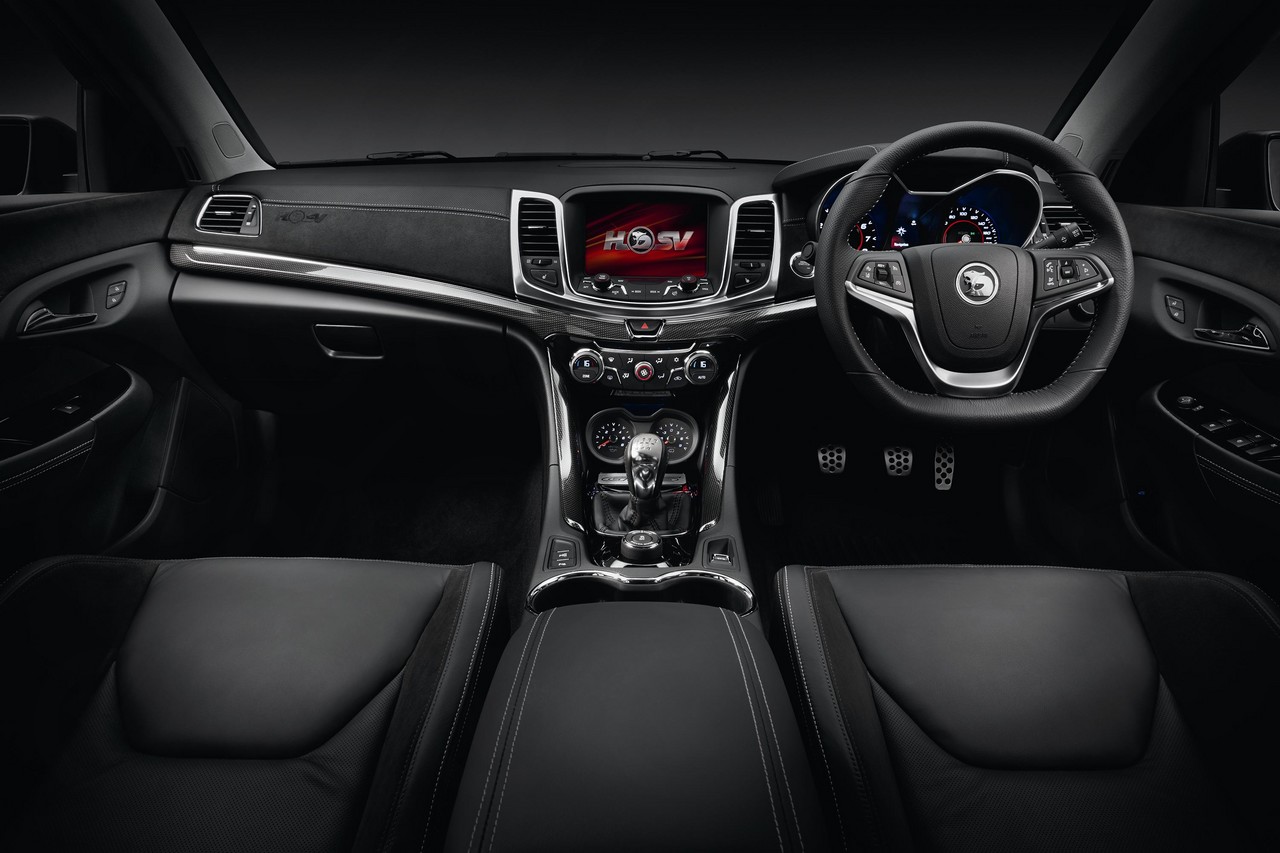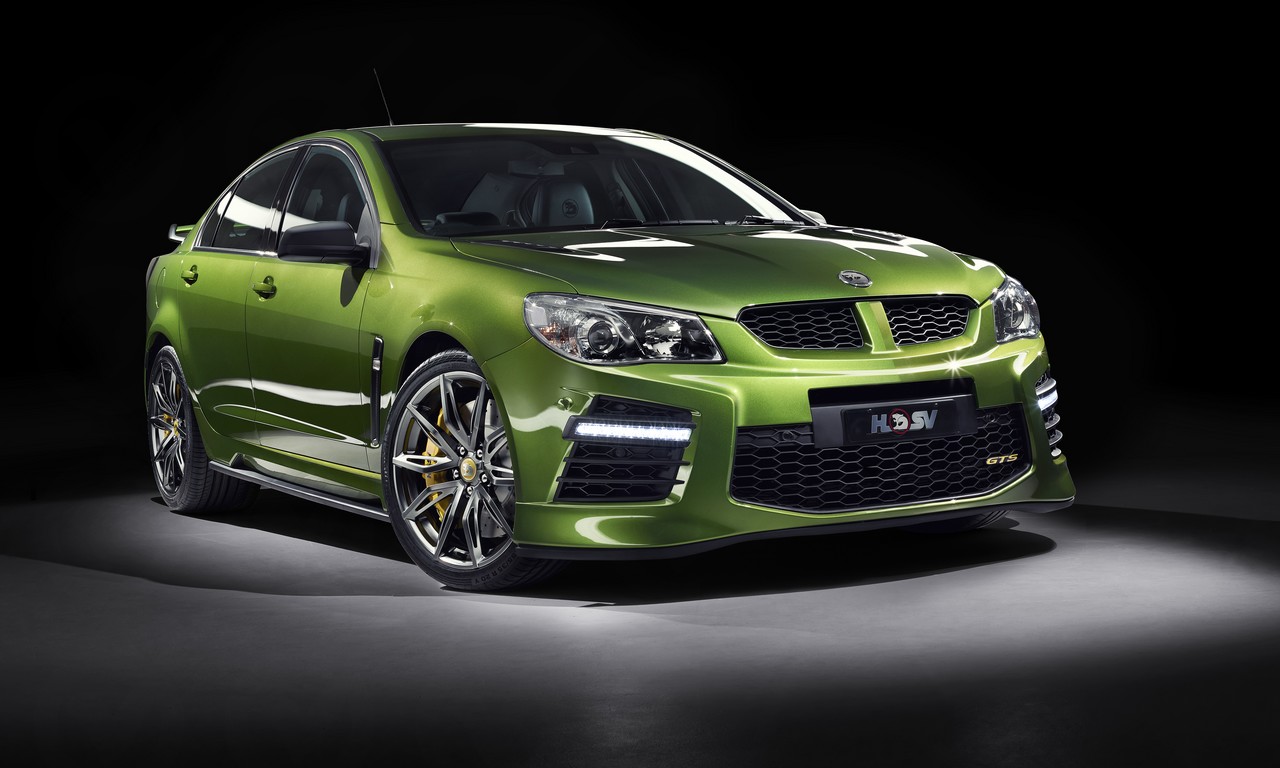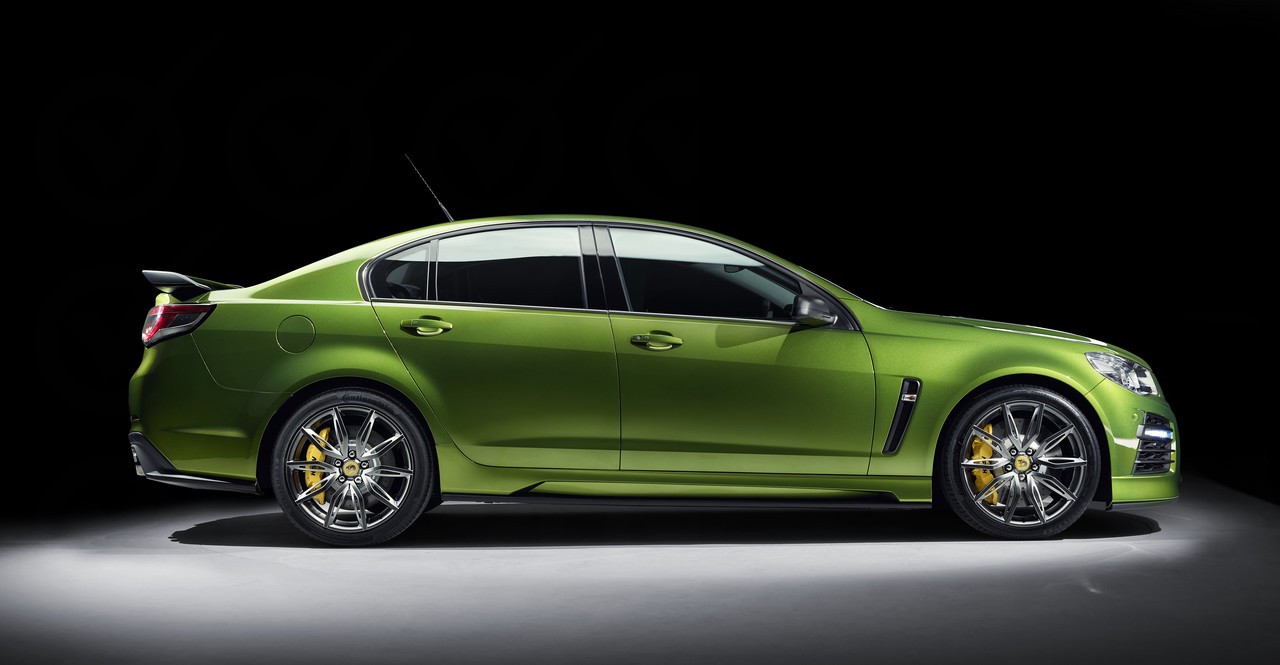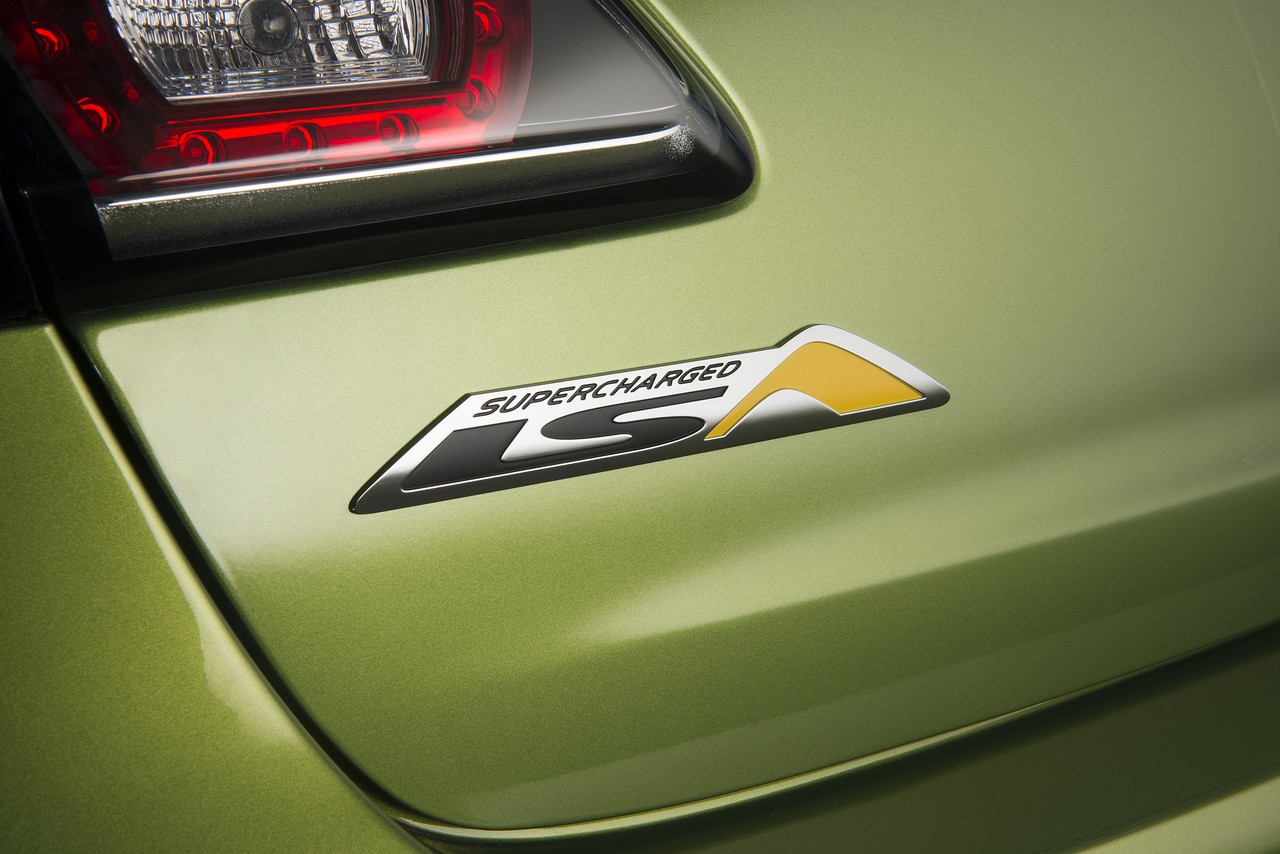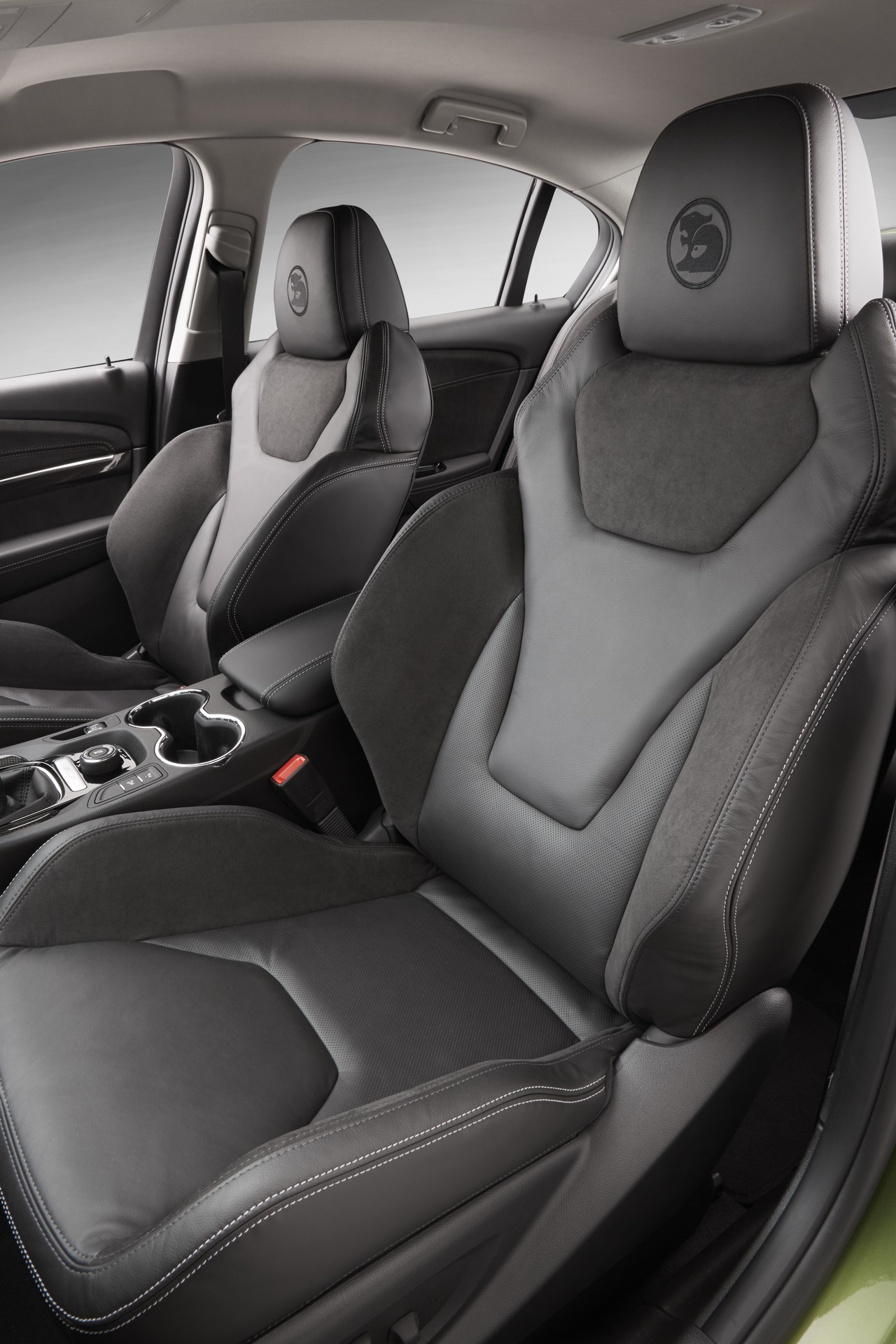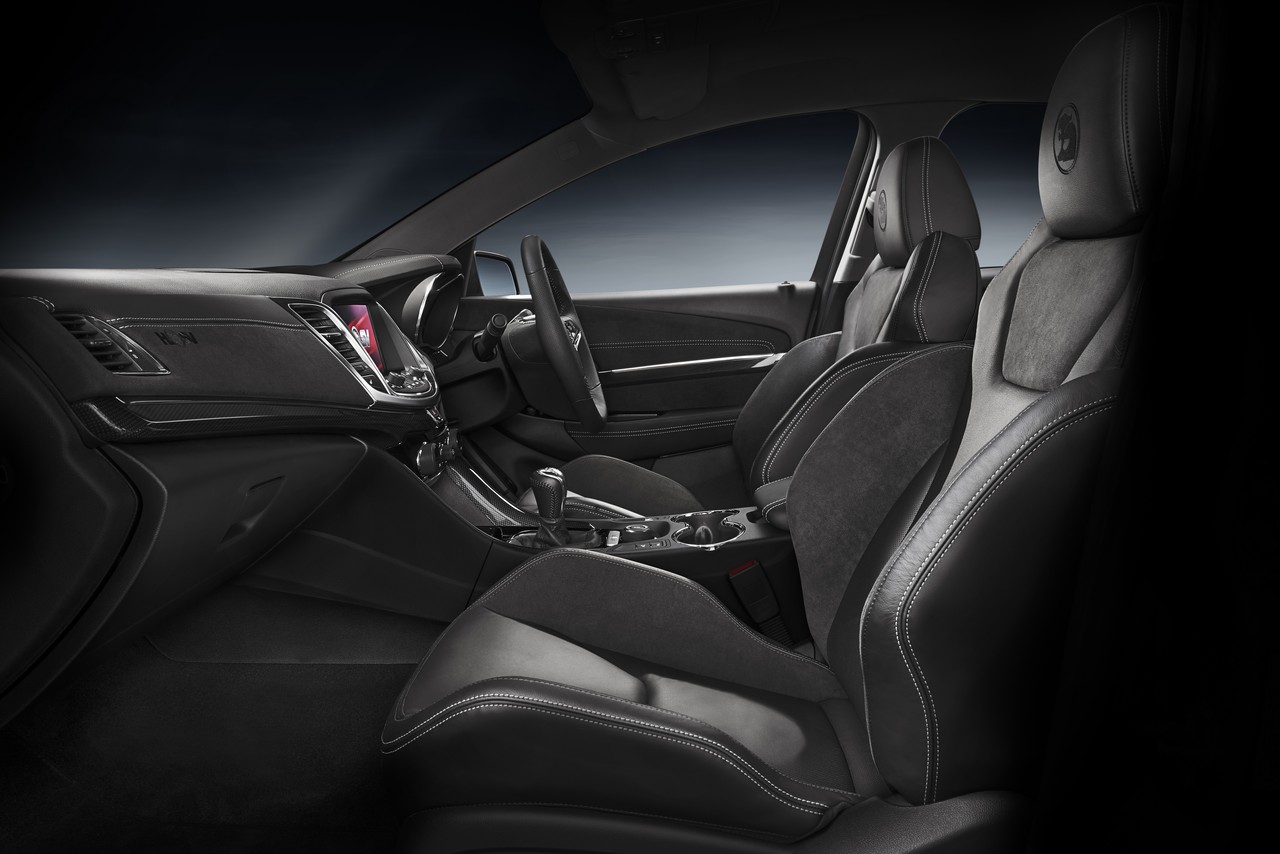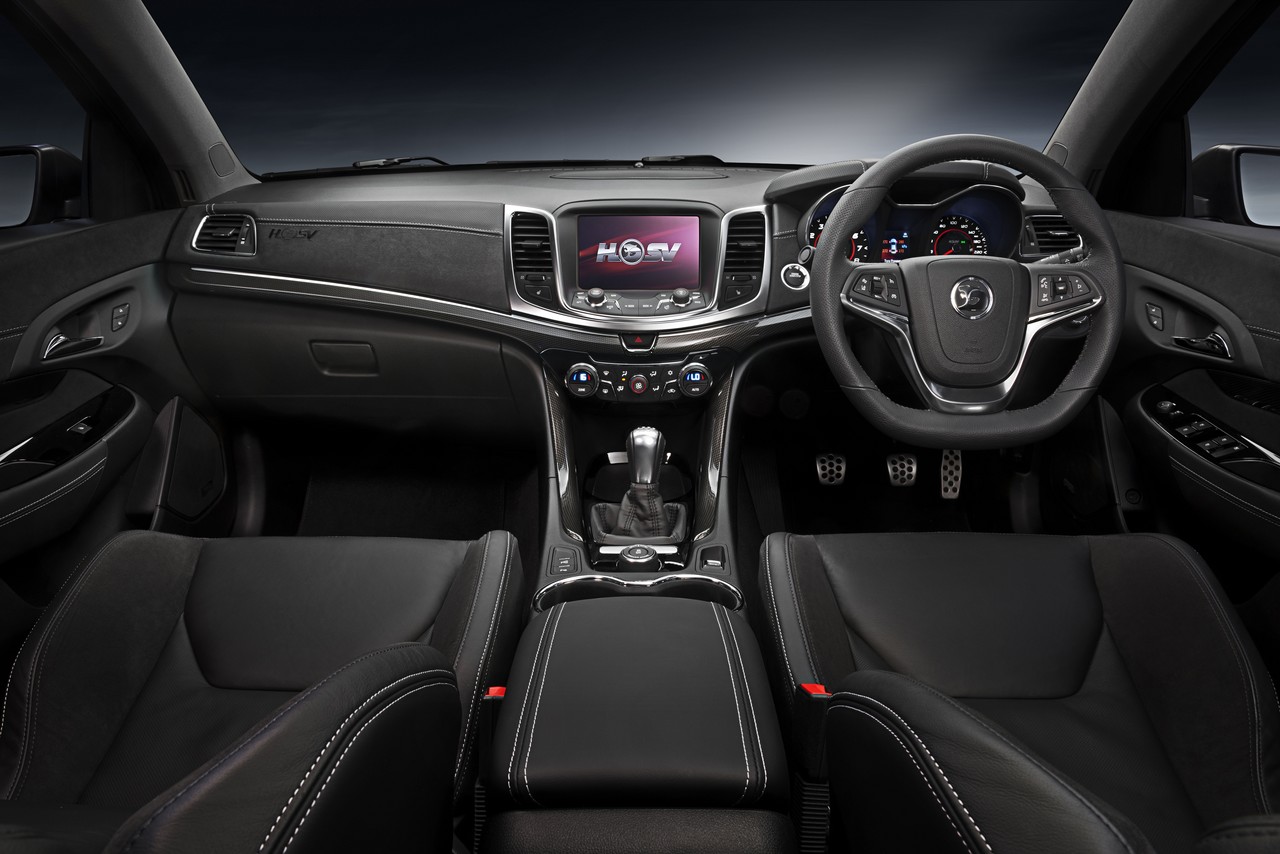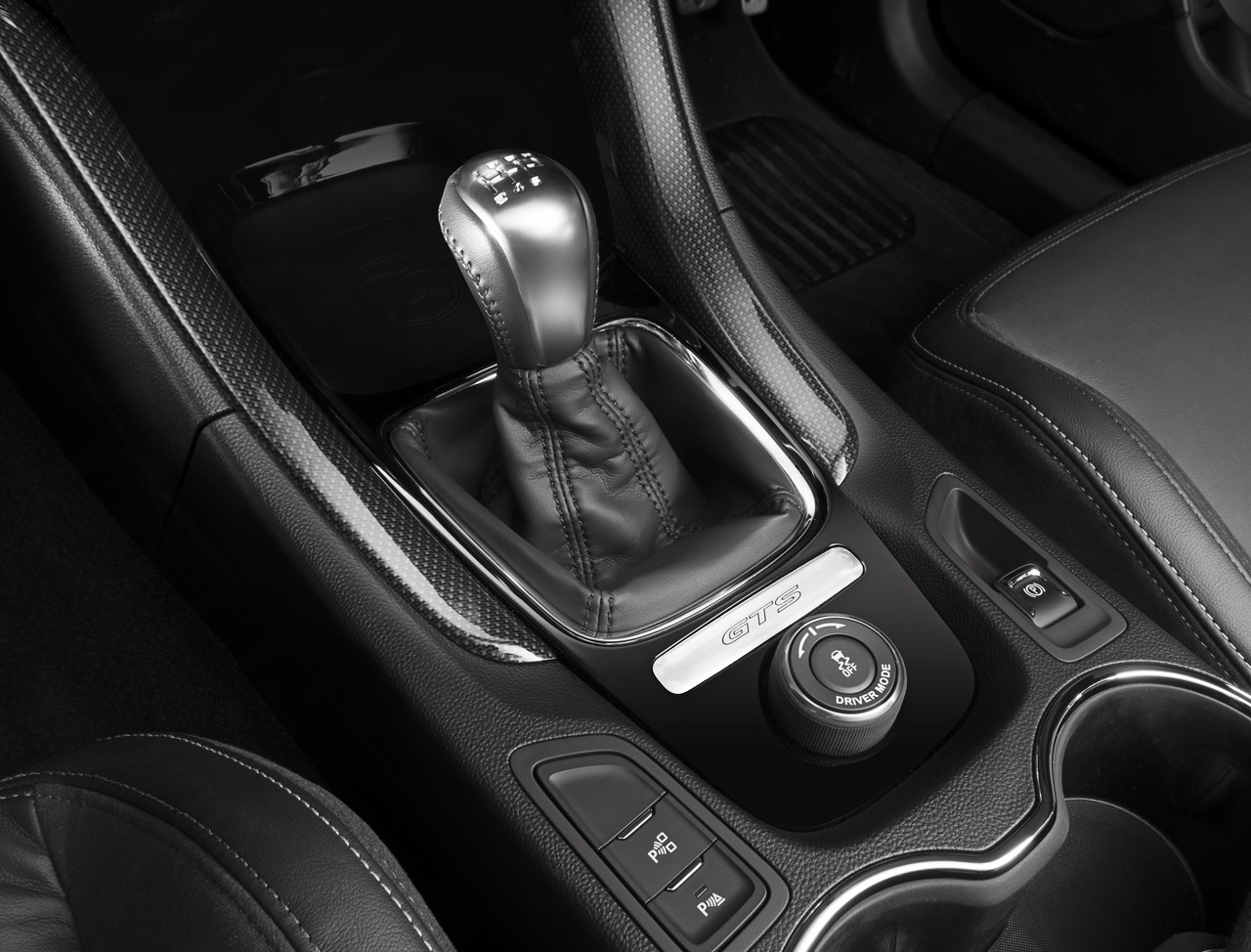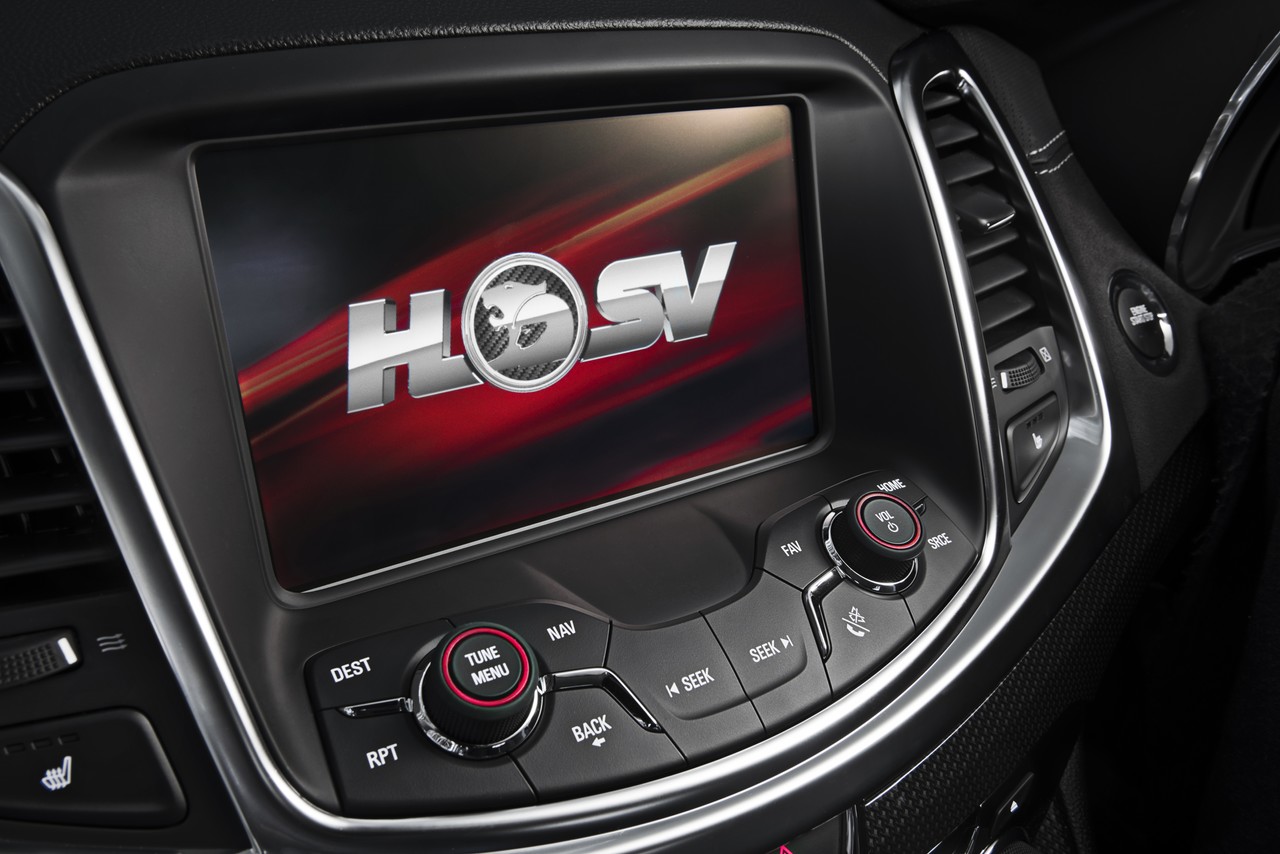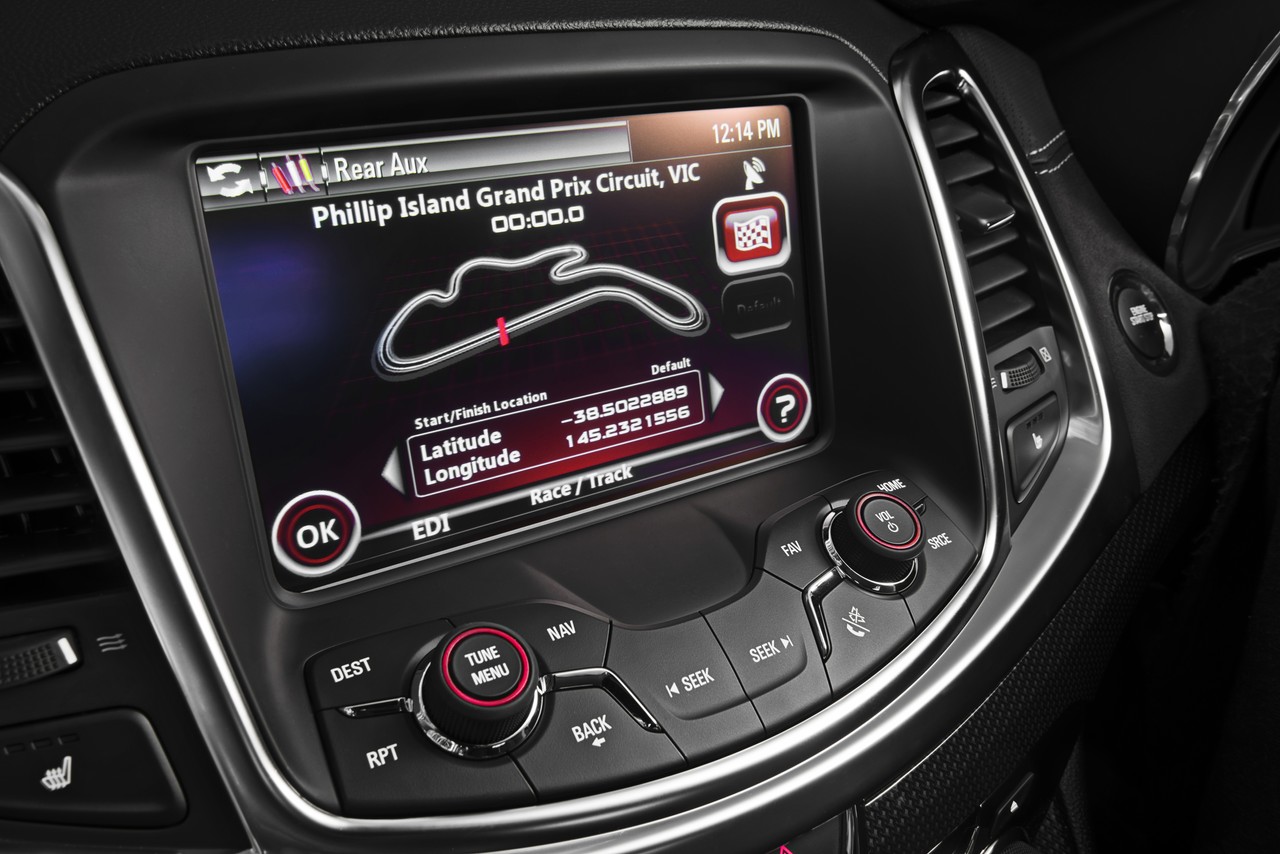
- Powerful 6.2-litre supercharged LSA V8 engine
- ‘Magnetic Ride Control’ combines excellent dynamics with reasonable compliance
- Spacious interior and supportive seats
- TR6060 and 6L90E transmissions work well
- High fuel consumption
- Electric steering too heavy and lacks feel
- Suspension crashes through potholes
Review: HSV Gen-F GTS (2013-15)
Overview
Released in August 2013, the HSV Gen-F GTS was a rear-wheel drive, performance sedan. Manufactured in Elizabeth, South Australia, and finished in Clayton, Victoria, the Gen-F GTS was powered by a supercharged 6.2-litre LSA V8 petrol engine that was mated to either a six-speed manual or automatic transmission.
Supercharged LSA V8 engine
The 6.2-litre LSA pushrod V8 engine had a 103.25 mm bore and 92.0 mm stroke, a cast aluminium cylinder block and head, a sixth-generation Eaton Roots-type supercharger (with four-lobe rotors, a capacity of 1.9-litres and peak boost of 9 psi), a single brick intercooler, hypereutectic pistons and a compression ratio of 9.0:1.
TR6060 and 6L90E transmissions
The Tremec TR-6060 ‘MG9’ manual transmission featured a dual-mass flywheel, twin-disc clutch and triple synchros for improved shift quality. Compared to the standard TR-6060 transmissions used in other Gen-F HSV models, the MG9 transmission had a strengthened output shaft, high-strength rear housing and an additional roller bearing to cope with the high torque outputs. Similarly, the 6L90E automatic transmission had a strengthened input gearset with two additional pinion gears, an additional clutch plate and a strengthened output shaft and gearset.
Dimensions
The Gen-F GTS was 4943 mm long, 1899 mm wide, 1467 mm tall and had a 2915 mm long wheelbase.
Suspension
The Gen-F GTS had double-pivot MacPherson strut front suspension and independent, four-link rear suspension. Like the E-Series GTS , the Gen-F GTS was fitted with HSV’s ‘Magnetic Ride Control’ system which used magneto-rheological fluid in the monotube dampers to provide variable damping through the application of an electric current that varied the viscosity of the damping fluid.
For the Gen-F range, however, the third generation Magnetic Ride Control system had an extra set of coils that could almost instantaneously reverse the polarity of the iron filings to vary suspension damping.
Steering
The GTS was fitted with electric power-assisted steering and a mechanical rear axle differential lock which could brake the inside rear wheel when cornering (i.e. torque vectoring) for greater traction.
| Engine | Trans. | Peak power | Peak torque | |
|---|---|---|---|---|
| GTS | 6.2-litre LSA supercharged petrol V8 | 6sp man., 6sp auto |
430 kW at 6000 rpm | 740 Nm at 4200 rpm |
Safety equipment
Standard safety equipment for the Gen-F GTS included dual front airbags, front side airbags, full-length curtain airbags, ABS, electronic brake force distribution, brake assist, electronic stability control, traction control, Side Blind Zone Alert, Reverse Traffic Alert, Forward Collision Warning, Lane Departure Warning and front seatbelts with pretensioners and load limiters.
Brakes
The Gen-F GTS had 390 mm by 36 mm floating two-piece front disc brakes with forged six-piston AP Racing calipers and 372 mm by 28 mm rear discs with four-piston calipers.
Features
Standard features for the Gen-F GTS included 20-inch Satin Graphite forged alloy wheels with 255/35 R20 front and 275/35 R20 Continental 5P tyres, a nine speaker Bose sound system with a CD/DVD player, MP3-compatibility, auxiliary inputs (3.5 mm/USB/iPod) and Bluetooth connectivity, dual-zone climate control air conditioning, satellite navigation with an eight-inch colour touch screen display, HSV Performance seats with leather trim, eight-way power adjustable and heated front seats, head-up display, an Enhanced Driver Interface, cruise control, daytime running lights, automatic headlights, rain-sensing wipers, front and rear parking sensors, a reversing camera, leather-wrapped steering wheel, remote central locking with proximity key, push-button start, power windows and heated mirrors, automatically dipping door mirrors on reverse, a height and reach adjustable steering wheel, an electric park brake, 12 volt power outlet, an alarm and immobiliser.
An ‘Auto Park Assist’ function was fitted as standard which enabled the vehicle to steer into parallel and 90-degree angle parks while the driver operated the accelerator and brake pedals. Models fitted with automatic transmissions also had a remote engine start function which could be operated via the key fob.
November 2014 (MY15) update
With the release of the MY15 GTS in November 2014,
- Models with automatic transmissions were fitted with steering wheel gearshift paddles;
- The 20-inch alloy wheels featured a ‘Dark Stainlesss’ finish;
- A new Hyperflow rear spoiler was available as a no-cost option;
- An optional ‘Pitch Black’ styling package was introduced which included black accents for the fender vents, casings and rear spoiler; and,
- New ‘Jungle Green’ and ‘Some Like It Hot Red’ paint finishes were introduced (replacing ‘Karma’ and ‘Fantale’).
Brochure
Related links
- HSV Press: HSV Launches New Gen-F Range (May 2013)
- HSV Press: HSV Announces Australian Pricing For New Gen-F Range (May 2013)
- HSV Press: HSV Launches 430 Kilowatt GTS (May 2013)
HSV Gen-F2 GTS (2015-17)
Overview
Commencing production in October 2015, the HSV Gen-F2 GTS introduced updated styling. From the front, the Gen-F2 GTS could be identified by the lower air intake ‘spears’ in its front fascia, subtle ‘splitter’ and pitch black bonnet vents. In profile, the Gen-F2 GTS featured new 20-inch lightweight forged ten-spoke alloy wheels finished in ‘Hyper Dark Stainless’ and new contoured side skirts. Furthermore, the Gen-F2 GTS introduced a revised rear diffuser and a ‘vibrant ocean blue’ paint finish named Slipstream.
| Engine | Trans. | Peak power | Peak torque | |
|---|---|---|---|---|
| GTS | 6.2-litre supercharged LSA petrol V8 | 6sp man., 6sp auto |
430 kW at 6000 rpm | 740 Nm at 4200 rpm |
| GTS 30 Years | 6.2-litre supercharged LSA petrol V8 | 6sp man., 6sp auto |
430 kW at 6000 rpm | 740 Nm at 4200 rpm |
| GTSR | 6.2-litre supercharged LSA petrol V8 | 6sp man., 6sp auto |
435 kW at 6150 rpm | 740 Nm at 3850 rpm |
| GTSR W1 | 6.2-litre supercharged LS9 petrol V8 | 6sp man. | 474 kW at 6500 rpm | 815 Nm at 3900 rpm |
Features
For the HSV Gen-F2 GTS, the auxiliary gauges at the base of the centre stack were discontinued to improve storage space.
2017 HSV Gen-F2 GTSR
Production of the HSV Gen-F2 GTSR commenced in April 2017. Compared to the HSV Gen-F2 GTS, outputs for the HSV GTSR’s engine increased to 435 kW at 6150 rpm and 740 Nm at 3850 rpm, in part due to the fitment of a hi-flow K&N performance air filter. Like the HSV Gen-F2 30 Years range, the bi-modal exhaust system for the GTSR had a recalibrated exhaust valve control that opened earlier in the rev range.
Visually, the HSV Gen-F2 GTSR could be identified by its new front fascia with matte black accents and graphics, front splitter which extended around the lower edges, new daytime running lamps and wider front fenders (by 12 mm on each side) which featured horizontal fender vents. At the rear, the GTSR had a new fascia and diffuser which housed quad exhaust outlets – with dual diamond tips – and a new ‘Aeroflow’ decklid spoiler.
The HSV Gen-F2 GTSR had wider fenders to house the 20 x 9.0J front and 20 x 10.0J rear ‘SV Panorama’ five-spoke forged alloy wheels which had waisted spoke sides to reduce mass and a ‘Hyper Dark Stainless’ finish. Furthermore, the HSV GTSR had 410 mm fully-floating front brake discs with Ferodo 4488 brake pads and six-piston monoblock AP Racing calipers.
Inside, the HSV GTSR featured ‘HSV Podium’ seats that were finished in Alcantara and had diamond-quilted stitching and leather bolsters.
2017 HSV Gen-F2 GTSR W1
Production of the HSV Gen-F2 GTSR W1 commenced in April 2017 and was limited to ‘approximately 300 vehicles’. The HSV GTSR W1 was powered by General Motors’ 6.2-litre supercharged LS9 engine which was first introduced on sixth-generation Chevrolet Corvette ZR1 in 2009. Compared to the LSA engine for the standard HSV Gen-F2 GTS, changes for the LS9 engine included:
- A larger 2.3-litre supercharger (1.9-litres for the LSA);
- Forged aluminium pistons (hypereutectic for the LSA);
- Dry sump lubrication; and,
- A carbon-fibre airbox designed by HSV.
Peak outputs for the LS9 engine in the HSV GTSR W1 were 474 kW at 6500 rpm and 815 Nm at 3900 rpm. It is understood that the HSV GTSR W1 could accelerate from rest to 100 km/h in 4.2 seconds. While the top speed for the HSV GTSR W1 was electronically-limited to 250 km/h, its theoretical top speed was 293 km/h at 6600 rpm in sixth gear.
The hand-built LS9 engine took approximately five hours to assemble and was fitted at HSV’s production facility in Clayton, Victoria. To fit within the engine bay, the radiator was tilted backwards from its normal position, while a new oil tank design for the dry sump return and revised exhaust system were also implemented. The LS9 engine was mated to a six-speed Tremec TR6060 (MH3 specification) manual transmission which had a ZF Sachs twin-plate clutch.
The HSV GTSR W1 had coil-over springs and dampers by SupaShock, which also supplied Walkinshaw V8 Supercar teams. The suspension included linear-style damper pistons that had the ‘lowest frictional losses of any commercial damper available and a front coil design rated at approximately 2.2 times higher than the balance of the HSV range.’
The HSV GTSR W1 had Pirelli P Zero Trofeo R 265/35 R20 front and 295/30 R20 rear tyres. According to HSV, the Pirelli Trofeo R tyres were ‘track-focused’ tyres that were designed to ‘maximise standing start and mid-corner grip’.
Compared to the HSV Gen-F2 GTSR, the HSV GTSR W1 could be identified by its:
- Carbon fibre front fender vents;
- Matte Black ‘SV Panorama’ alloy wheels;
- Shadow chrome exhaust tips; and,
- ‘Aeroflow’ decklid spoiler finished in carbon fibre.
Inside, the HSV GTSR W1 had ‘HSV Podium’ seats finished in full Alcantara with diamond-quilted stitching, and an Alcantara-wrapped sports-profile steering wheel and gear selector.
Related links
- Brochure: HSV Gen-F2 GTS (September 2015)
- Brochure: HSV Gen-F2 GTSR and GTSR W1 (January 2017)
- Holden Special Vehicles: HSV Gen-F2 GTS
- Wikipedia.org: Holden VF Commodore – HSV
- Wikipedia.org: HSV – Gen F
